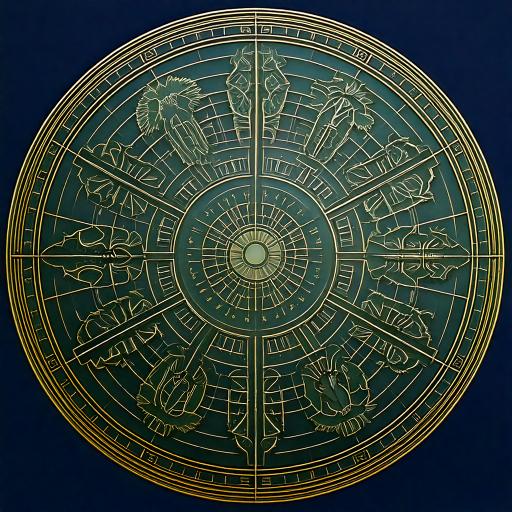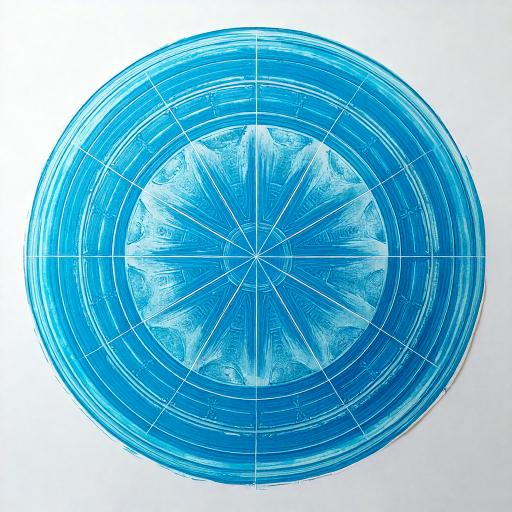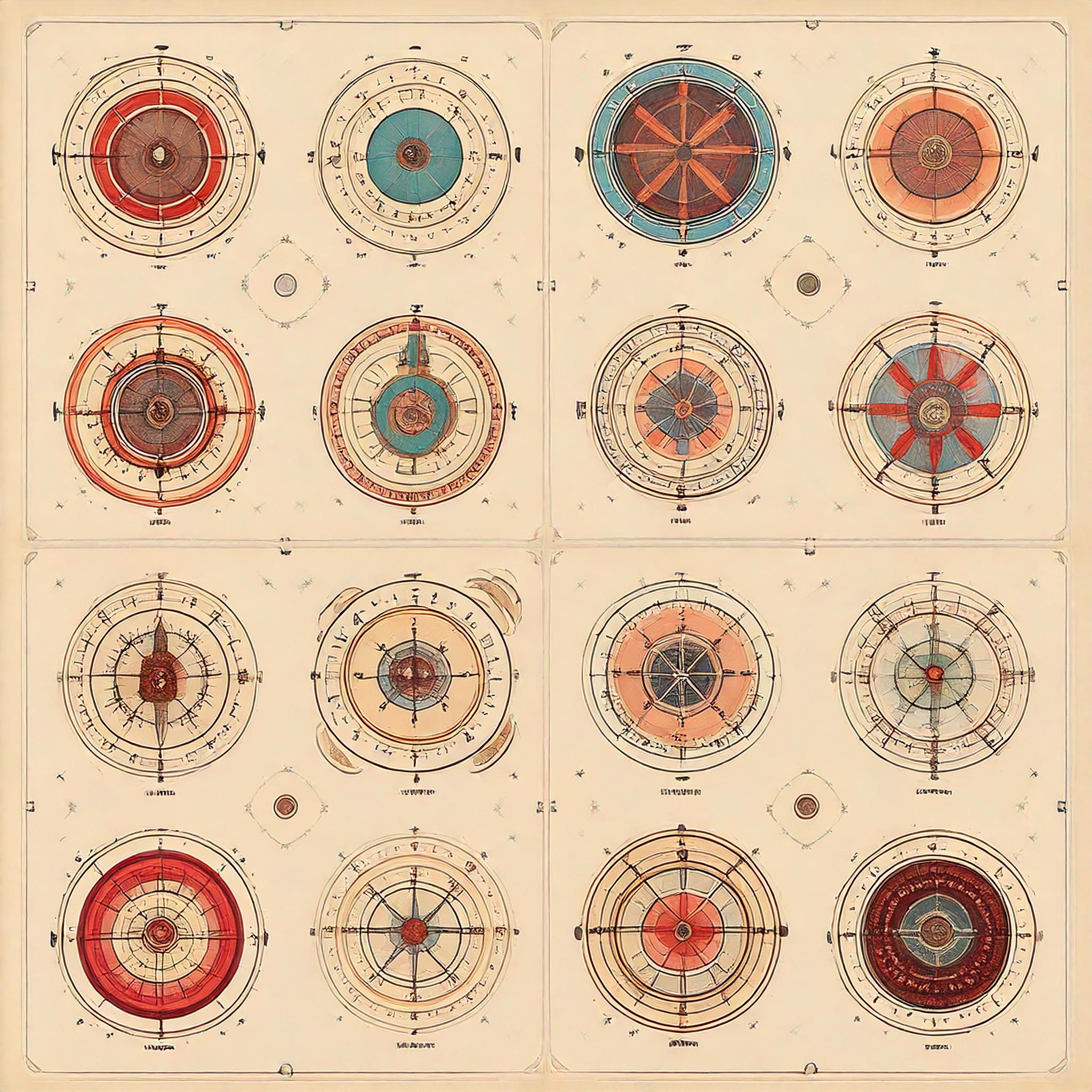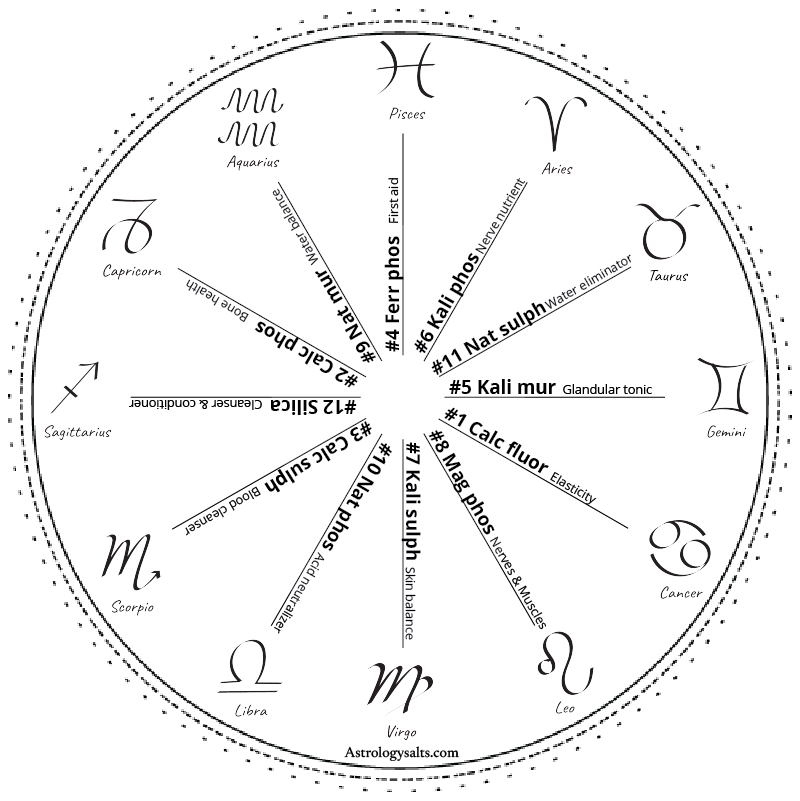
Please see below for excerpts from PART I: Modernized Writings from H.L. Cornell’s Encyclopaedia of Medical Astrology from Wellness with Astrology (2024).
This is for informational purposes about health and astrology. It is not intended to be a substitute for professional medical advice, diagnosis, or treatment.
Herbs as Remedies
In every locality on the Earth, Nature has provided an Herb, Plant, Flower, Leaf, Root, etc., with medicinal properties to combat the diseases peculiar to that locality. Herbs, to be highly efficient as remedies, should be gathered during the Planetary Hour ruled by the planet which rules the Herb, and when the Herb is at its prime, green, and juicy. Read the Chapter on “Medicines and Planetary Influence” in Pearce’s Textbook of Astrology, which gives the rulership of Herbs, and the rules for gathering them. The large textbook known as “Culpepper’s Herbal” very fully treats of Herbs, their rulerships, and as remedies.
Herbs are used as remedies on the principles of sympathy or antipathy. Thus diseases caused by Mars may be combatted by the Herbs and Remedies of Saturn, by antipathy, or if the Herbs of Mars are used, by sympathy. The Physiological Action, the Pathological Action, the General Action, the Elementary Qualities, the Chemical Affinities, the Therapeutical Affinities, the Diathesis, etc., of the Planets and Herbs are very nicely arranged in the book called “Astral Medicine” by Dr. Duz, of Paris, France, and on pages 130 to 141 of the said book.
The principal Herbs of each Planet are listed below, and the Therapeutic Properties given at the end of each Group. A more exhaustive list of the Herbs ruled by each planet is to be found in the book “Culpepper’s Herbal”, which is quite a large volume in itself.
Sun Group
Typical Herbs Ruled by Sun—Almond, Anagallis Arvensis, Angelica Sylvestris, Anthemis Nobillis, Ashtree, Bay Tree, Calendula Officinalis, Celandine, Centaurea Nigra, Chamomile, Chelidonium Majus, Citrus Aurantium, Colchicum Autumnale, Corn Hornwort, Drosera Rotundifolia, Echium Vulgare, Euphrasia Chamomilla, Eyebright, Fraxinus Excelsior, Grape (Vitis Vinifera), Heart Trefoil, Helianthus, Hypericum Androsaemium, Juniperus Communis, Laurel, Lemon, Ligusticum Scoticum, Male Peony, Marigold, Meadow Rue, Mistletoe, Mustard, Olive, Orange, Passion Flower, Peppermint, Petasites Vulgaris, Pimpernel, Potentilla Tormentilla, Rice, Rosmarinus Officinalis, Rue, Saffron, Sanguisorba Officinalis, Sinapis Nigra and Alba, St. John’s Wort, St. Peter’s Wort, Sun Dew, Sun Flower, Tormentil, Turnsole, Vine (Vitis Vinifera), Viper’s Bugloss, Walnut. The Therapeutic
Properties of the Sun Group are Cardiac, Anticachectic, Sudorific.
Moon Group
Typical Herbs Ruled by the moon—Acunthus Mollis, Adder’s Tongue, Agaricus, Anthemis Pyrethrum, Betony Stone-crop, Brassicae, Buck’s Meat, Cabbage, Caltrops, Cardamine Pratensis, Cheiranthus Cheiri, Chickweed, Clary, Cleavers Coralwort, Colewort, Colocynth, Convolvulus Coeruleus, Cress, Cuckoo Flowers, Cucumbers, Cucumis Sativis, Cucurbito Pepo, Daisy Dogtooth, Duck’s Meat, Duckweed, Flaf (Sweet), Geranium Triste, Honey-Suckle, Iris, Lactucas, Lady-smock, Lemnae, Lettuce, Lily (Meadow). Livelong, Loose-strife, Mercurialis Annua, Mercury, Moonwort, Mouse-ear, Ophioglossum Vulgatum, Orpine, Pearlwort, Pellitory, Peplis Portula, Portulaca Oleraceae, Privet, Pumpkin, Purslane, Pyrethrum, Rattle Grass, Salices (many of the Salices), Salvia Verbena, Saxifrage (Winter), Spunk, Stellaria Media, Stonecrop, Trefoil, Utricularia Vulgaris, Wallflowers, Water Arrowhead, Watercress, Waterfag, Water Lily (Yellow), Water Violet, White Lily, White Poppy, White Rose, White Saxifrage, Whitlow Grass, Wild Wallflower, Willows, Wintergreen, Woodbine.
The Therapeutic Properties of the Moon Group are Alterative, Attenuant, Emetic.
Mercury Group
Typical Herbs Ruled by Mercury — Amara-dulcis, Anethum Graveolens, Anise, Aniseed, Apium Graveolens, Artemisia Abrotantum, Avena, Azaleas, Balm (or Melissa), Bitter Sweet, Bryonia Alba (ruled by Jupiter), Calamintha Officinalis, Caraway, Carrot (Wild), Carum Carui, Celery (Wild), Convallaria Majalis, Coraline, Corylus Avellana, Cow Parsnip, Cynoglossum Officinale, Daucus Carota, Dill, Elecampane, Elfwort, Endive, Fennel, Fern, Foeniculum Vulgare, Garmander, Glycyrrhiza Glabra and Enchinata, Hare’s Foot, Hazel Nut, Horehound (White), Hound’s Tongue, Inula Helenuim, Lavandula Vera, Lavender of Our Gardens, Lily of the Valley, Liquorice, May Apple, Maidenhair (White and Golden), Male Fern, Mandrake, Marjoram (Common, Wild and Sweet), Marrubium Vulgare, Melissa, Mulberry, Myrtle, Nailwort, Nephrodium Felix Mas, Nux Vomica, Oats, Olive Spurge, Organum Vulgare, Parietaria Officinalis, Parsley (Wild), Pastinaca Sativa, Pellitory of the Wall, Petroselinum Sativum, Podophyllin, Satureia Hortensis, Savory, Savoy, Scabiosa Succisa, Smallage, Southern Wood, Starwort, Teucrium Scorodonia, Trefoil, Valerian, Wild Carrots, Winter Savory. The
Therapeutic Properties of the Mercury Group are Alterative, Antiperiodic, Cephalic, Nervine.
Venus Group
Typical Herbs Ruled by —Acillea Ptarmica, Ajuga Reptans, Alder Tree (Black and Common), Alehoof, Alkanet, Alnus Glutinosa, Althaea Officinalis, Apples, Archangel (Wild and Stinking), Arctium Lappa, Arrack, Artichoke, Asparagus, Beans, Bear Berry, Beilis Perennis, Birch, Bishop’s Weed, Black Alder, Blites, Bramble, Bugle Holly, Bunium Flexuosum, Burdock, Cherry, Chestnut (Earth), Chickpease, Cloves, Cock’s-Head, Coltsfoot, Columbines, Couchgrass, Cowslip, Crabsclaw, Cranesbill, Crosswort, Cudweed, Daisy, Devil’s-Bit, Dipsacus Sylvestris, Dropwort, Elder, Eryngium Maritimum, Featherfew, Figwort, Foxglove, Fumitory, Galium Cruciatum, Golden Rod, Gooseberry, Gromel, Ground Ivy, Groundsels, Herb Robert, Holly (Sea), Ivy (Ground), Indigo Plant (Indigofera), Kidney Bean, Kidney Wort, Ladies’ Bedstraw, Ladies’ Mantle, Leonurus Cardiaca, Ligustrum Vulgare, Lithospermum Arvense, Little Daisy, Mallow (Common), Marshmallow, Matricaria Parthenium, Mentha Pulegium, Mercury (Dog and French), Meum Athamanticum, Mint-money-wort, Mints, Motherwort, Mugwort, Nepeta Cataria, Nepeta Glechoma, Obione Portulacoides, Okro Gombo Pods, Orchis, Oxalis Acetosella, Parsley, Peachtree, Peartree, Penny Royal, Penny Wort, Peppermint, Plantago Major, Plantain (Greater), Plums, Poppy, Primula Veris, Prunella Vulgaris, Pulsatilla, Queen of the Meadows, Ragwort, Red Cherries, Rose (Damask), Rubus Fruiticosis, Rye, Sanicle, Sanicula. Europaea, Saponaria Officinalis, Scrophularia Nodosa and Aquatica, Sea Holly, Secale Cereale, Selfheal, Senecia Jacobaea, Sibthorpia Europaea, Silverweed, Soap-wort, Sonchus Arvensis, Sorrel, Sowthistle, ,Spearmint, Spignel, Strawberry, Tansy, Teasel, Throatwort, Thyme, Tussilago Farfara, Verbena Officinalis, Vervain, Violets, Wheat, Yarrow.
The Therapeutic properties of the Venus Group are Antinephritic, Diuretic, Demulcent, Emetic.
Mars Group
Typical Herbs Ruled by Mars — Ajuva Chamaepitys, Alexandrian Senna, All-heal, Allium Sativum, Aloes, American Centaury, Anemone, Arnica, Arsmart, Artemisia Absinthium, Arum Maculatum, Barberry, Basil, Bayberry, Berberis Vulgaris, Boxtree, Briony, Brooklime, Broom, Broomrape, Bryonia Dioica, Butcher’s Broom, Capsicum, Capers, Carduus Benedictus, Cassia Obovata, Catmint, Cayenne Pepper, Centaurea Calcipitra, Centaury (American), Cinchona, Civet, Cochlearia Armoracia, Cooko-pint, Coriander, Cotton Thistle, Cranesbill (Wild), Crataegus Oxyacantha, Cresses (Various), Crowfoot (Marsh), Daisy (English), Dove’s-foot, Dragon’s Flaxweed, Dyer’s-weed, Flaxweed (Dragon’s), Furze-bush, Garden Cress, Garlic, Gentian (Yellow), Geranium Robertianum and Columbinum, Gratiola Officinalis, Hawthorn, Honeysuckle, Hope, Hops, Horseradish, Horsetongue, Humulus Lupus, Hyssop (Hedge), Juniperus Sabina, Lady’s Thistle, Lead Wort, Leeks, Linum (Various Species of), Madder, Marsh Crowfoot, Masterwort, Mousetail, Mustard, Myrtle (Wax), Nettles (Small Stinging), Ocymum Basilicum, Onions, Oregon Grape, Pepper (Red), Peppermint, Peruvian Bark, Peucedanum Ostruthium, Pine, Pineapple, Plantain, Poison Nut, Quaker Button, Ranunculus Aquatilis, Rheum Rhaponticum and Undulatum, Rhubarb, Rocket, Rubia Tinctorum, Sarsaparilla, Savin, Senna (Alexandrian), Sisymbrium Sophia, Savin, Smilax, Snake Root (White), Star Thistle, Strychnos Nux Vomica, Thistle (Lady’s), Tobacco, Ulex Europaeus, Urtica (Urens, Dioica, and Pilulifera), Valeriana Officinalis, Wakerobin, Wax Myrtle, White Snake Root, Witch-hazel, Wormwood (Common), Yellow Gentian.
The Therapeutic Properties of the Mars Group are Aphrodisiac, Caustic, Escharotic, Resolvent, Rubefacient, Stimulant, Tonic, Vesicant.
Jupiter Group
Typical Herbs Ruled by Jupiter — Acer Campestre, Agrimonia Eupatoria, Alexander, Aloe (American), Aniseed, Apricots, Asclepias Vincetoxicum, Asparagus Officinalis, Avens, Balm, Balsam, Beet (White), Beta Vulgaris, Betonica Officinalis, Betony, Bilberry, Bloodwort, Borago Officinalis (Borage), Blue Flag, Castanea Vesca, Chervil, Chestnut Tree, Cichorium Endivia, Cinnamon, Cinquefoil, Cochlearia Officinalis and Anglica, Costmary, Crithmum Maritimum, Dandelion, Dianthus Caryophyllus, Dock, Dog Grass, Endive, Eupatorium, Ficus Carica, Fig Tree, Flag (Blue), Fumitoria Officinalis, Geum Urbanum, Gilliflowers, Ginseng, Hart’s Tongue, Hyssopus Officinalis (Hyssop), Houseleek, Iceland Moss, Iris, Jessamine, Lapsana Communis, Lichen Caninus and Islandicus, Lime Tree, Liverwort, Lungwort, Maple, Marchantia Polyraorpha, Melilotus Officinalis, Melissa Officinalis, Melilot, Moss (Iceland), Myrrh, Nailwort, Oak, Peppermint, Pinks (Wild), Polybody, Potentilla Reptans, Pulmonaria Officinalis, Roses (Red), Saccharum Officinalis, Sage, Salvia Officinalis, Samphire (Small), Scurvy Grass, Sempervivum Tectorum, Smyrnium Olusatrum, Succory (Wild), Swallow-wort, Tanacetum Vulgare, Taraxacum Dens-leonis (Dandelion), Thistle, Thorn Apple, Tomato, Tormentil, Triticum Repens, Vaccinium Myrtillus, Wild Pinks, Wild Succory.
The Therapeutic Properties of the Jupiter Group are Alexipharmic, Analeptic, Anthelmintic, Antispasmodic, Balsamic, Emollient.
Saturn Group
Typical Herbs Ruled by Saturn—Aconite, Aegopodium, Podagraria, Amaranthus Blitum, Aspen Poplar, Asplenium Ceterach, Atropa Belladonna, Barley, Barrenwort, Beach Tree, Beet, Belladonna, Birdsfoot, Bistort, Black Hellebore, Blackthorn, Blue Bottle, Boneset, Bucksthorn, Cannabis Sativa, Capsella Bursa-pastoris, Carduus Heterophyllus, Centaurea Nigra, Clown’s Woundwort, Comfrey, Conium Maculatum, Crosswort, Cydonia Vulgaris, Equisetum Vulgaris, English Oak, Fagus Sylvatica, Flaxweed, Fleawort, Fumitory, Gladwin, Goutwort, Ground Moss, Hawkweed, Heartsease, Hedera Helix, Helleborus Niger, Hemlock, Hemp (Indian), Henbane, Holly, Hordeum Species, Horsetail, Hyoscyamus Niger, Ilex Aquifolium, Illecebrum Verticillatum, Indian Hemp, Isatis Tinctoria, Ivy (Common), Jew’s Ear, Knapweed, Knotgrass, Lolium Perenne, Mangel, Medlar, Mespilus Germanica, Mosses, Mullein (Great), Navelwort, New Jersey Tea, Oak (English), Onion, Ornithopus Perpusillus, Pansies, Persicaria Urens, Plantago Psyllium, P. Coronopus, Plantain (Plantago), Polygonatum Multiflorum, Polypod (Rock), Polypodium Dryopteris, Poplar (Aspen), Populus Nigra, Prunus Spinosa, Purus Torminalis, Quince, Rhus Toxicodendron, Rock Polypod, Rupture Wort, Rushes, Rye, Sciatica Wort, Service Tree, Shepherd’s Purse, Sloes, Solomon’s Seal, Spleen wort, Symphytum Officinale, Tamarix Anglica, Taxus Baccata, Tea (New Jersey), Thistle, Tulsan, Ulmus Campestris, Verbascum Thapsus, Wolfsbane.
The Therapeutic Properties of the Saturn Group are Antiphlogistic, Antipyretic, Astringent, Febrifuge, Refrigerant, Sedative, Styptic.
Neptune Group
This planet is said to have rule over Herbs which are of a narcotic, soporific and sleep-producing, anaesthetic nature, such as Opiates, Tobacco, Cocaine, Morphine, Heroin, etc.
The Therapeutic Properties assigned to Neptune are Analgesic, Anodyne, Hypnotic, Soporific, and Suggestive.
Uranus Group
The rulerships of the more distant planets Uranus and Neptune and over Plants and Herbs, if they have such rulership on the Earth Plane, have not as yet been very clearly defined or listed. Their influences are observed so far as being mainly mental, or spiritual, and to affect the mind and nervous system.
The Therapeutic action of the drugs and herbs of Neptune, or the effects of Uranus action, are observed to be electric and vibrational. Of the Herbs, Croton Oil, the oil expressed from the seed of the Croton Tiglium tree, is listed as a typical herb of this planet. More of the minerals and metals are listed than herbs, as being ruled by Uranus.










